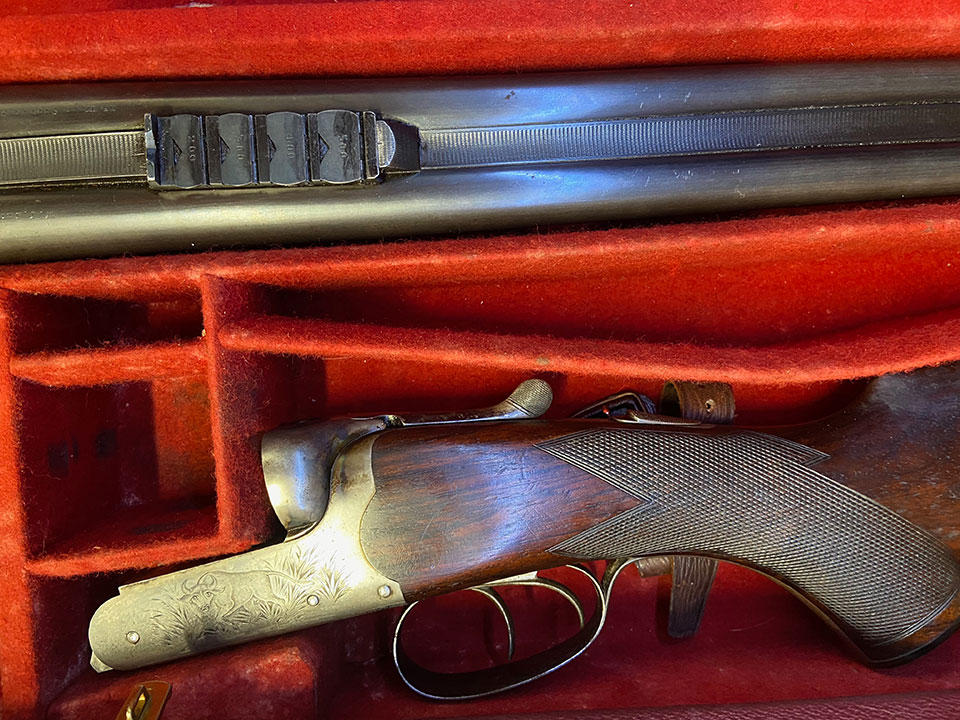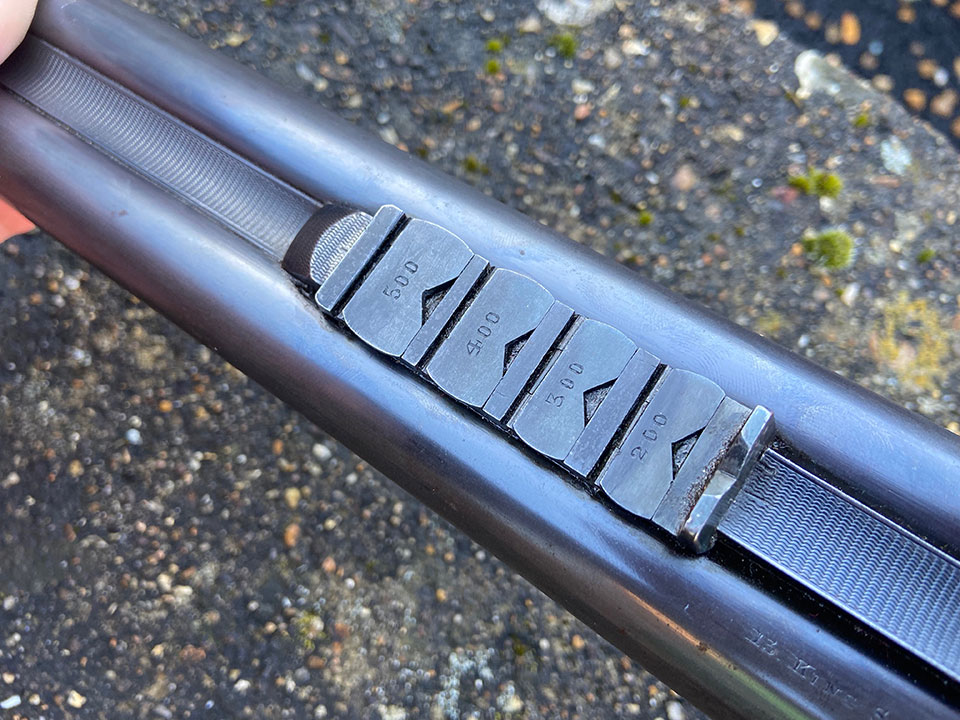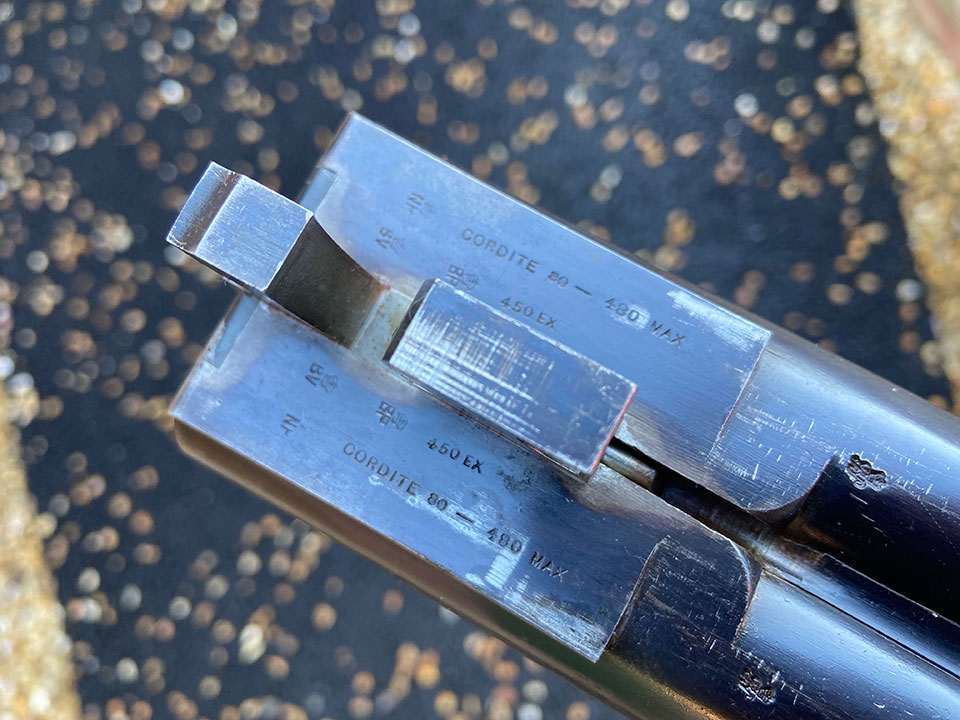Your first safari beckons; the trip of a lifetime. You have saved your money, done your homework, read the adventure stories of Teddy Roosevelt, John Taylor and Robert Ruark, and you know the exploits of the ‘white hunters’ depicted in Brian Hearn’s great book of the same name better than your own family history.
Your personal North Face of the Eiger might be a tuskless cow elephant or a cape buffalo but when you are standing on that red earth, clad in a pair of shorts, shod in a pair of Courtney’s and holding in your hands the one thing that you hope will finish this story with the animal on the ground, rather than you under its feet, or on the sharp end of its horns, you will want that rifle to be part of the story and up to the job.

So much of what we choose to do is more personally significant than it appears when crudely deconstructed. What makes an office worker decide to enter a ‘blue collar boxing’ match? Why do seemingly sane family men leave everything behind to climb a mountain, at great personal risk? Why do some of us decide that it is important to tramp for days through fly-bitten scrub, dodging poisonous snakes and risking carnivorous ambush, in order to see if we can cut the proverbial mustard when we finally track our quarry to within shooting range?
It is more than just the act or the exercise. It is about learning more about ourselves, re-affirming that we can succeed when we are exposed and all the safety mechanisms protecting us from normal life are stripped away.
Get punched in the face, fall off the mountain, get trampled by a wild animal - or prevent those risks from defeating you by engaging your own wits, skills, courage, training. That is the challenge that we need to face in order to grow.

This is why, for the true dangerous game hunter, the choice of rifle goes beyond the purely practical and the method of hunting is as traditional and pared-back as can be. To shoot a buffalo at eighty yards with a modern bolt-rifle, from a steady rest, is not dangerous game hunting (unless you mess up the shot; then it can get very dangerous in short order).
Anybody steeped in the history of old-school safari will yearn for a double rifle. The problem is, double rifles are very expensive. If you have put a great deal of money into your hunt (and you will have invested a very large sum to hunt anywhere truly wild), you may not have the cash left over to buy a top-notch rifle.
There is your conundrum. The rifle is the most important part of your kit. What is the right decision as to buying something that will be dependable when you need to pull the trigger, when your budget is limited?
Many people will decide that a magazine rifle is the answer. Certainly, many hunters of limited means in the first half of the twentieth century did. A great many African animals were shot with bolt-action rifles made and sold by all our great gun makers. It may be possible to find a vintage one in good condition, or you may decide to seek a new one.

Rigby offer a ‘Big Game’ model and that would do nicely, in .416 or .450 Rigby, if you have around eight thousand pounds to sink.
However, in the mind’s eye of many safari virgins, the double rifle is an inescapably essential ingredient in their vision of a perfect hunt. A double must be sought and somehow procured. So, what does the basement of British double rifles contain? What can you get for low-end money that will look and feel the part and not let you down?
The W.J. Jeffery pictured here is just such a rifle. It is built on a second quality Anson & Deeley action, though it has excellent, chopper-lump, Krupp steel, barrels. It is fitted with classic leaf sights from 100 to 500 yards (ignore all but the first) and it is chambered for a serious cartridge; the .450 (No.2) Nitro Express (3 1/2”). It has two triggers, top-lever operation and no ejectors.
With Purdey under-bolts and a doll’s head rib extension, set into a robust frame, the rifle has 24” barrels (nice for close work in forest) and weighs 11lbs 3oz.
Not by any means ornate, it has minimal engraving, though it does retain a good deal of its original metal finishes. The side of the action depicts a crudely executed, but nonetheless charming buffalo, as imagined by the 1906 engraver whose exposure to actual animals would have been minimal.
The .450 No.2 NE was developed by Jeffery in 1903, just three years before the rifle was made. It is a 3 1/2” long, rimmed, bottle-necked brass cartridge loaded with a 480 grain bullet over 80 grains of Cordite. That travelled at 2,175 fps, which makes it formidable, delivering 5,050 ft/lbs of energy. It was manufactured by Eley to improve the extraction and performance of the, otherwise excellent, .450 NE that originated at Rigby in 1899.

Shortly after it was introduced, the British outlawed the .450 in India and Sudan (in 1907) and Eley necked-up the case to make the .475 No.2. So, excellent as it was, the .450 No.2 was not as influential as it may otherwise have been.
John Taylor loved it. He owned four and killed hundreds of elephant and buffalo with them.Professional hunter Philip Percival also used one for many years.
The pedigree of the cartridge certainly provides the reassurance one enjoys when hunting in close cover for big animals. W.J. Jeffery was a well-known maker (actually seller) of big game rifles, being influential in developing several important cartridges, including the .600 Jeffery.

In their 1912 catalogue, Jeffery no longer illustrate this exact model but a similar .450 No.2 cost £30, with was significantly cheaper than their next model boxlock non-ejector, which was £40. Cartridges then cost between 32 and 34 shillings per hundred.
This rifle would be a very capable companion in Africa today. It lacks ‘refinements’ but it is very well made, each mechanism time-proven and the cartridge is a reliable killer.
To buy such a thing in today’s market will cost around £10,000.
Published by Vintage Guns Ltd on




